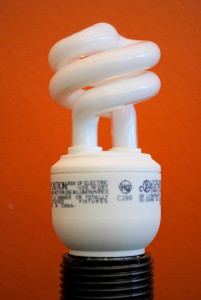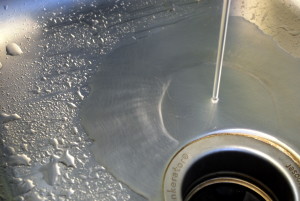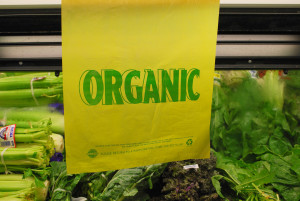Cutting back on the things you use and the amount you consume is perhaps one of the most effective way to reduce your footprint. It’s more than just turning off the water while brushing your teeth of switching off the light when you leave the house.
While we love the small steps, turning it up a notch makes a monumental difference. Reducing your impact involves a completely different way of thinking. It is about changing daily wasteful habits and seeing opportunities for savings in even the smallest of places. Here are our top 15 tips for reducing your usage of energy, water and products.

Studies show that homeowners received dramatically reduced electricity bills after their homes were weatherized. On average, electricity usage was reduced by 12-18 percent each month. Basic measures include weatherstripping, window caulking, attic insulation and switching to energy-efficient light bulbs.
2. Turn down the heat.
Adjusting the thermostat by just two degrees is the equivalent of 2,000 pounds of carbon emissions annually and almost $100 in energy costs. That’s the equivalent of driving a car more than 3,000 miles!
3. Make the switch to LED.
Jump on the bandwagon! Nearly 75 percent of all Americans made the switch to energy-efficient light bulbs in 2009. The Electric Power Research Institute estimates potential national annual electricity cost savings would exceed $250 million if all seasonal mini-lights were switched to LEDs. LEDs also typically have a longer lifespan than traditional incandescents. Typical incandescent bulbs last only 1,000 to 2,000 hours, with some estimates quoting LED lifespans from 25,000 to 50,000 hours.
4. Unplug or pay up.
Vampire power is the power that your electrical devices use even when they are turned off or in standby mode. In fact, your household bleeds an average of $1,000 every year, as 40 percent of all your electricity use goes to feed these phantoms, according to the Department of Energy. So, unplug electronics when they’re not in use. Use a power strip, and turn it off when your TVs and toys are not in use.
5. Hop on the bus.
Utilize your local public transit system. Light rails, buses, subways and the like are easy ways to avoid crowded parking lots and reduce your impact. In fact, a 10 percent increase in transit ridership nationwide would save 135 million gallons of gasoline a year.

The average faucet flows at a rate of 2 gallons per minute, and a five-minute shower uses 10 to 25 gallons of water. Consider installing a low-flow showerhead or aerator on your sink. You don’t need a complete bathroom remodel to start saving.
2. Take it outside.
According to the EPA, the typical single-family suburban household uses at least 30 percent of its water outdoors for irrigation. Try watering your lawn in the morning or the evening when it’s cool outside. This will cut down on evaporation due to sunlight and heat.
3. Stop and think before you drink.
Americans consume an estimated 1,500 water bottles per second. However, our tap water systems are regulated for drinking purposes, so fill up your reusable bottle for on-the-go refreshment. You can fill up to five, one-gallon jugs with water from your tap for about one cent.
4. Fix that leak (yes, it makes a difference).
Leaky faucets that drip at the rate of one drip per second can waste more than 3,000 gallons of water each year. To check for a leak, read your water meter before and after a two-hour period when no water is being used. If the meter does not read exactly the same, you probably have a leak. To tell if your toilet has a leak, place a drop of food coloring in the tank. If the color shows in the bowl without flushing, it’s time to call a plumber!
5. Load it up.
A large percentage of our water is wasted in the laundry room. The average washing machine uses about 41 gallons per load, so always make sure you get the most bang for your buck and fill your clothes to the brim. For extra points, install an ENERGY STAR-certified washer.

When choosing a product, considerations such as organic ingredients and fair trade materials play an important role, but packaging is also an important component of a product’s eco-friendliness. Opt for materials that are recyclable or made from post-consumer materials.
2. Shop online for one shipment.
Order multiple items that can be shipped together in one purchase to decrease packaging material and transportation costs. To have 10 pounds of packages shipped by overnight air uses 40 percent less fuel than driving yourself round-trip to the mall, according to the Center for Energy and Climate Solutions.
3. Reassess what you need inside the store.
We’re all for toting our reusable bags to the grocery store. But let’s take it one step further and be aware of the disposable items we consume while shopping. Do you really need that plastic produce bag for your bananas? Is the small polystyrene cup worth just a sip-size sample of coffee? Opportunities for reduction are everywhere.
4. Go loco for local.
Most produce in the U.S. is picked four to seven days before being placed on supermarket shelves and is shipped for an average of 1,500 miles before being sold. Buying locally grown food means you’re getting the most fresh product, rather than something that was picked almost a week prior. It also cuts down on energy use and supports local farmers.
5. Look for the chasing arrows.
Perhaps one of the most recognizable labels, the universal recycling symbol is used to designate recyclable materials in a product or a product’s packaging. The three chasing arrows symbolize “closing the loop” by recycling and buying recycled products. This makes it important to understand your curbside program or local recycling facilities. Once you have a handle on what is accepted, you can make better purchasing decisions.
While we love the small steps, turning it up a notch makes a monumental difference. Reducing your impact involves a completely different way of thinking. It is about changing daily wasteful habits and seeing opportunities for savings in even the smallest of places. Here are our top 15 tips for reducing your usage of energy, water and products.

According to ENERGY STAR, CFLs use 75 percent less energy and last about 10 times longer than an incandescent bulb. Photo: Amanda Wills, Earth911.com
Energy You Consume
1. Check for air leaks in your home.Studies show that homeowners received dramatically reduced electricity bills after their homes were weatherized. On average, electricity usage was reduced by 12-18 percent each month. Basic measures include weatherstripping, window caulking, attic insulation and switching to energy-efficient light bulbs.
2. Turn down the heat.
Adjusting the thermostat by just two degrees is the equivalent of 2,000 pounds of carbon emissions annually and almost $100 in energy costs. That’s the equivalent of driving a car more than 3,000 miles!
3. Make the switch to LED.
Jump on the bandwagon! Nearly 75 percent of all Americans made the switch to energy-efficient light bulbs in 2009. The Electric Power Research Institute estimates potential national annual electricity cost savings would exceed $250 million if all seasonal mini-lights were switched to LEDs. LEDs also typically have a longer lifespan than traditional incandescents. Typical incandescent bulbs last only 1,000 to 2,000 hours, with some estimates quoting LED lifespans from 25,000 to 50,000 hours.
4. Unplug or pay up.
Vampire power is the power that your electrical devices use even when they are turned off or in standby mode. In fact, your household bleeds an average of $1,000 every year, as 40 percent of all your electricity use goes to feed these phantoms, according to the Department of Energy. So, unplug electronics when they’re not in use. Use a power strip, and turn it off when your TVs and toys are not in use.
5. Hop on the bus.
Utilize your local public transit system. Light rails, buses, subways and the like are easy ways to avoid crowded parking lots and reduce your impact. In fact, a 10 percent increase in transit ridership nationwide would save 135 million gallons of gasoline a year.

The Clean Water Act built the basic structure for regulating pollutants in water. But according to EPA Administrator Lisa Jackson, “We have a long way to go.” Photo: Amanda Wills, Earth911.com
Water You Drink
1. When in doubt, go low-flow.The average faucet flows at a rate of 2 gallons per minute, and a five-minute shower uses 10 to 25 gallons of water. Consider installing a low-flow showerhead or aerator on your sink. You don’t need a complete bathroom remodel to start saving.
2. Take it outside.
According to the EPA, the typical single-family suburban household uses at least 30 percent of its water outdoors for irrigation. Try watering your lawn in the morning or the evening when it’s cool outside. This will cut down on evaporation due to sunlight and heat.
3. Stop and think before you drink.
Americans consume an estimated 1,500 water bottles per second. However, our tap water systems are regulated for drinking purposes, so fill up your reusable bottle for on-the-go refreshment. You can fill up to five, one-gallon jugs with water from your tap for about one cent.
4. Fix that leak (yes, it makes a difference).
Leaky faucets that drip at the rate of one drip per second can waste more than 3,000 gallons of water each year. To check for a leak, read your water meter before and after a two-hour period when no water is being used. If the meter does not read exactly the same, you probably have a leak. To tell if your toilet has a leak, place a drop of food coloring in the tank. If the color shows in the bowl without flushing, it’s time to call a plumber!
5. Load it up.
A large percentage of our water is wasted in the laundry room. The average washing machine uses about 41 gallons per load, so always make sure you get the most bang for your buck and fill your clothes to the brim. For extra points, install an ENERGY STAR-certified washer.

Do you really need that plastic produce bag for your items? Be aware of the items you consume while shopping. Photo: Amanda Wills, Earth911.com
Products You Buy
1. Start with your cart.When choosing a product, considerations such as organic ingredients and fair trade materials play an important role, but packaging is also an important component of a product’s eco-friendliness. Opt for materials that are recyclable or made from post-consumer materials.
2. Shop online for one shipment.
Order multiple items that can be shipped together in one purchase to decrease packaging material and transportation costs. To have 10 pounds of packages shipped by overnight air uses 40 percent less fuel than driving yourself round-trip to the mall, according to the Center for Energy and Climate Solutions.
3. Reassess what you need inside the store.
We’re all for toting our reusable bags to the grocery store. But let’s take it one step further and be aware of the disposable items we consume while shopping. Do you really need that plastic produce bag for your bananas? Is the small polystyrene cup worth just a sip-size sample of coffee? Opportunities for reduction are everywhere.
4. Go loco for local.
Most produce in the U.S. is picked four to seven days before being placed on supermarket shelves and is shipped for an average of 1,500 miles before being sold. Buying locally grown food means you’re getting the most fresh product, rather than something that was picked almost a week prior. It also cuts down on energy use and supports local farmers.
5. Look for the chasing arrows.
Perhaps one of the most recognizable labels, the universal recycling symbol is used to designate recyclable materials in a product or a product’s packaging. The three chasing arrows symbolize “closing the loop” by recycling and buying recycled products. This makes it important to understand your curbside program or local recycling facilities. Once you have a handle on what is accepted, you can make better purchasing decisions.

Amanda Wills
Amanda Wills is the Assistant Editor of Earth911.com